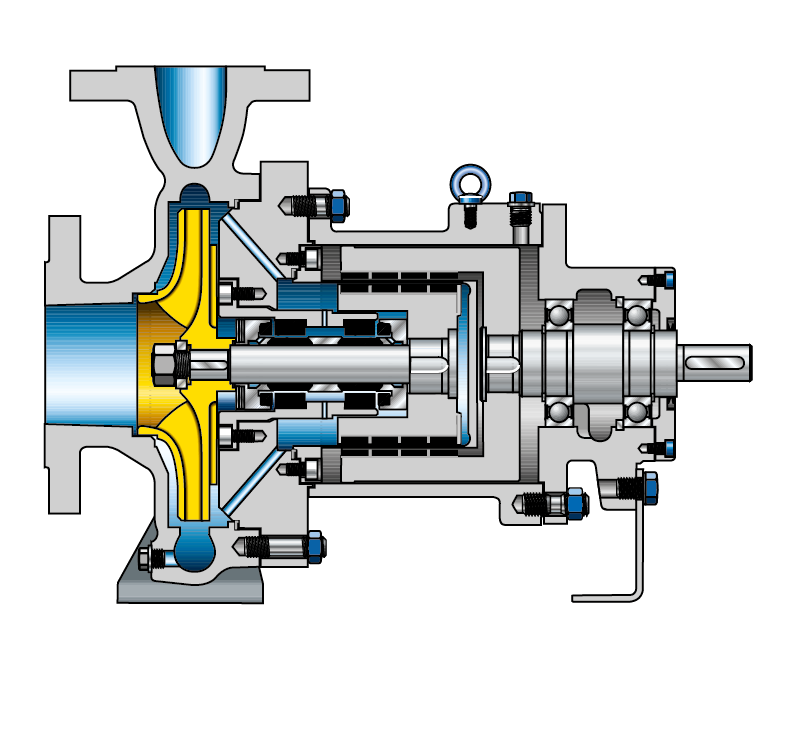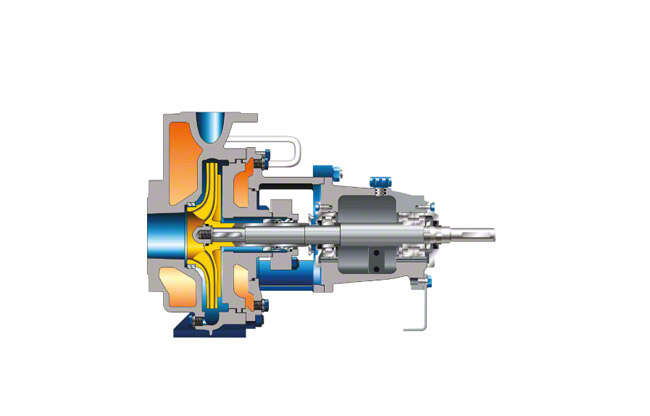Chemical pump
Chemical pumps are used in the petrochemical, food processing and chemical industries as well as in off-site applications of refineries and in high-temperature heating systems. They pump hot, cold, aggressive, volatile, explosive, toxic, contaminated and especially valuable liquids.
For this reason, the wetted parts are made of corrosion-resistant metallic and non-metallic materials or are protected by resistant rubber, plastic or enamel coatings. See Fig. 1 Chemical pump

Fig. 1 Chemical pump: Standardised chemical pump with plastic liner
Suitable shaft seals prevent the fluid handled from leaking out of the pump during operation and standstill. Most pumps are fitted with a single or double mechanical seal a supply system is added in some cases. Hydrodynamic seals are also used, especially in paint shops. An auxiliary impeller keeps the shaft passage free from the fluid handled during operation; a standstill shaft seal takes on this function during standstill. See Fig. 20 Shaft seals
If seal-less pumps are required (see Wet rotor motor), canned motor pumps can be used. See Fig. 2 Chemical pump

Fig. 2 Chemical pump: Canned motor pump
An alternative are seal-less pumps driven via a magnetic coupling with permanent magnets. See Fig. 3 Chemical pump

Fig. 3 Chemical pump: Driven via permanent-magnet coupling (mag-drive pump)
Chemical pumps are available for horizontal or vertical installation, also as submersible pumps (vertical shaft submersible pumps) for installation in tanks. See Fig. 2 Vertical shaft submersible pump
Chemical pumps are usually designed with a single stage (see Volute casing pumps), or partly with two stages. They are generally not self-priming pumps. For pump selection, a particular focus is on the NPSH value of the pump, which should be as low as possible. To cater for special operating conditions, design variants with heatable casings, intensively coolable casing covers or coolable bearing brackets are used.

Fig. 4 Chemical pump: Standardised chemical pump to ISO 2858
